Md Mazharul Islam
In-Pixel Foreground and Contrast Enhancement Circuits with Customizable Mapping
Oct 23, 2024Abstract:This paper presents an innovative in-pixel contrast enhancement circuit that performs image processing directly within the pixel circuit. The circuit can be tuned for different modes of operation. In foreground enhancement mode, it suppresses low-intensity background pixels to nearly zero, isolating the foreground for better object visibility. In contrast enhancement mode, it improves overall image contrast. The contrast enhancement function is customizable both during the design phase and in real-time, allowing the circuit to adapt to specific applications and varying lighting conditions. A model of the designed pixel circuit is developed and applied to a full pixel array, demonstrating significant improvements in image quality. Simulations performed in HSPICE show a nearly 6x increase in Michelson Contrast Ratio (CR) in the foreground enhancement mode. The simulation results indicate its potential for real-time, adaptive contrast enhancement across various imaging environments.
A Review on Digital Pixel Sensors
Feb 07, 2024
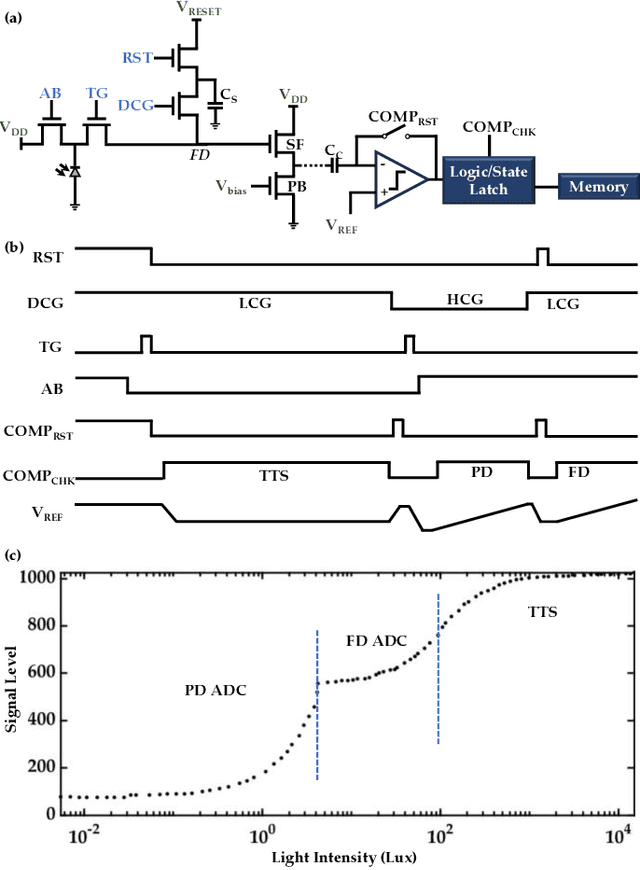
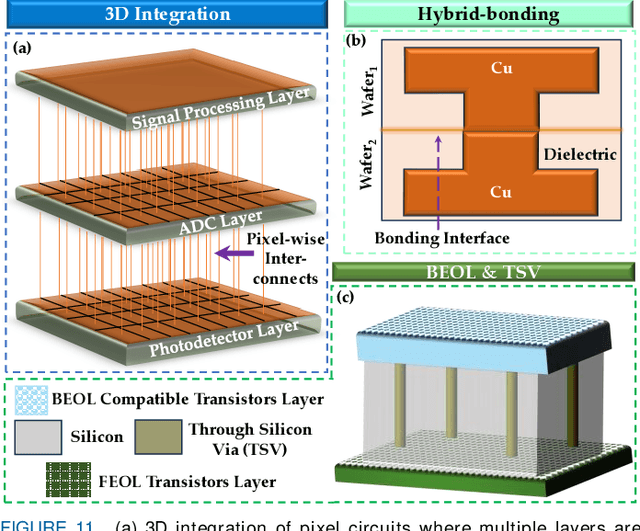
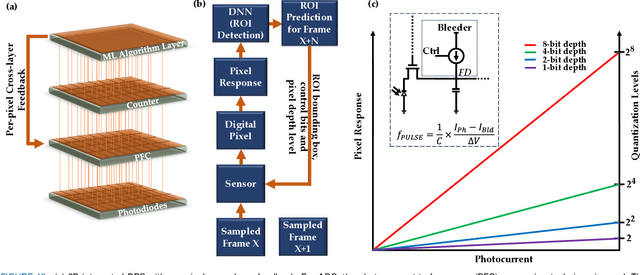
Abstract:Digital pixel sensor (DPS) has evolved as a pivotal component in modern imaging systems and has the potential to revolutionize various fields such as medical imaging, astronomy, surveillance, IoT devices, etc. Compared to analog pixel sensors, the DPS offers high speed and good image quality. However, the introduced intrinsic complexity within each pixel, primarily attributed to the accommodation of the ADC circuit, engenders a substantial increase in the pixel pitch. Unfortunately, such a pronounced escalation in pixel pitch drastically undermines the feasibility of achieving high-density integration, which is an obstacle that significantly narrows down the field of potential applications. Nonetheless, designing compact conversion circuits along with strategic integration of 3D architectural paradigms can be a potential remedy to the prevailing situation. This review article presents a comprehensive overview of the vast area of DPS technology. The operating principles, advantages, and challenges of different types of DPS circuits have been analyzed. We categorize the schemes into several categories based on ADC operation. A comparative study based on different performance metrics has also been showcased for a well-rounded understanding.
A Deep Dive into the Design Space of a Dynamically Reconfigurable Cryogenic Spiking Neuron
Aug 30, 2023



Abstract:Spiking neural network offers the most bio-realistic approach to mimic the parallelism and compactness of the human brain. A spiking neuron is the central component of an SNN which generates information-encoded spikes. We present a comprehensive design space analysis of the superconducting memristor (SM)-based electrically reconfigurable cryogenic neuron. A superconducting nanowire (SNW) connected in parallel with an SM function as a dual-frequency oscillator and two of these oscillators can be coupled to design a dynamically tunable spiking neuron. The same neuron topology was previously proposed where a fixed resistance was used in parallel with the SNW. Replacing the fixed resistance with the SM provides an additional tuning knob with four distinct combinations of SM resistances, which improves the reconfigurability by up to ~70%. Utilizing an external bias current (Ibias), the spike frequency can be modulated up to ~3.5 times. Two distinct spike amplitudes (~1V and ~1.8 V) are also achieved. Here, we perform a systematic sensitivity analysis and show that the reconfigurability can be further tuned by choosing a higher input current strength. By performing a 500-point Monte Carlo variation analysis, we find that the spike amplitude is more variation robust than spike frequency and the variation robustness can be further improved by choosing a higher Ibias. Our study provides valuable insights for further exploration of materials and circuit level modification of the neuron that will be useful for system-level incorporation of the neuron circuit
Reimagining Sense Amplifiers: Harnessing Phase Transition Materials for Current and Voltage Sensing
Aug 30, 2023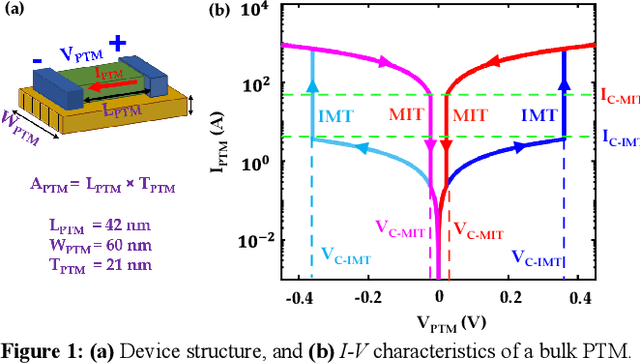
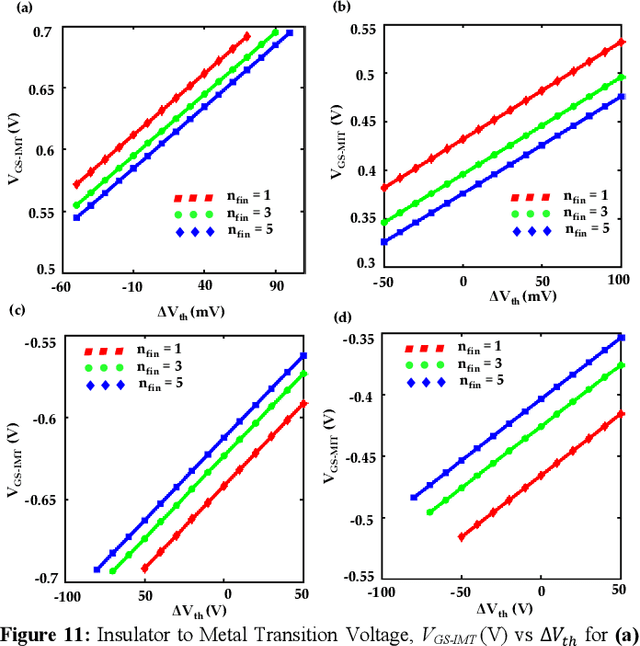
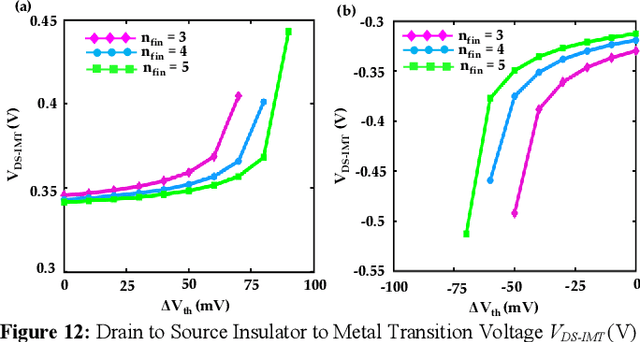
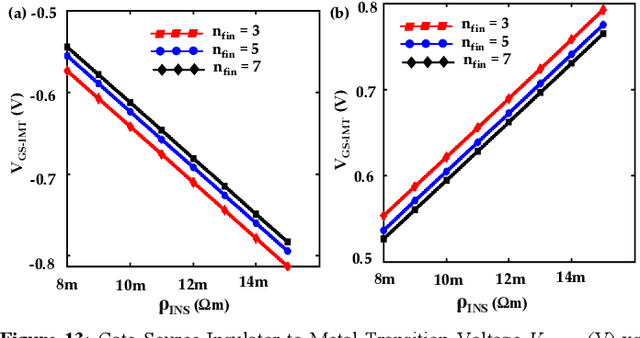
Abstract:Energy-efficient sense amplifier (SA) circuits are essential for reliable detection of stored memory states in emerging memory systems. In this work, we present four novel sense amplifier (SA) topologies based on phase transition material (PTM) tailored for non-volatile memory applications. We utilize the abrupt switching and volatile hysteretic characteristics of PTMs which enables efficient and fast sensing operation in our proposed SA topologies. We provide comprehensive details of their functionality and assess how process variations impact their performance metrics. Our proposed sense amplifier topologies manifest notable performance enhancement. We achieve a ~67% reduction in sensing delay and a ~80% decrease in sensing power for current sensing. For voltage sensing, we achieve a ~75% reduction in sensing delay and a ~33% decrease in sensing power. Moreover, the proposed SA topologies exhibit improved variation robustness compared to conventional SAs. We also scrutinize the dependence of transistor mirroring window and PTM transition voltages on several device parameters to determine the optimum operating conditions and stance of tunability for each of the proposed SA topologies.
Cryogenic Neuromorphic Hardware
Mar 25, 2022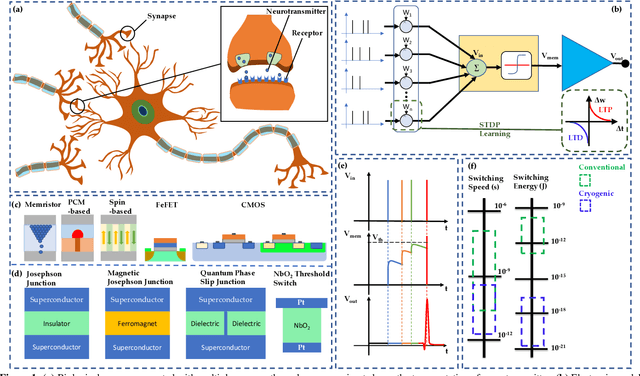
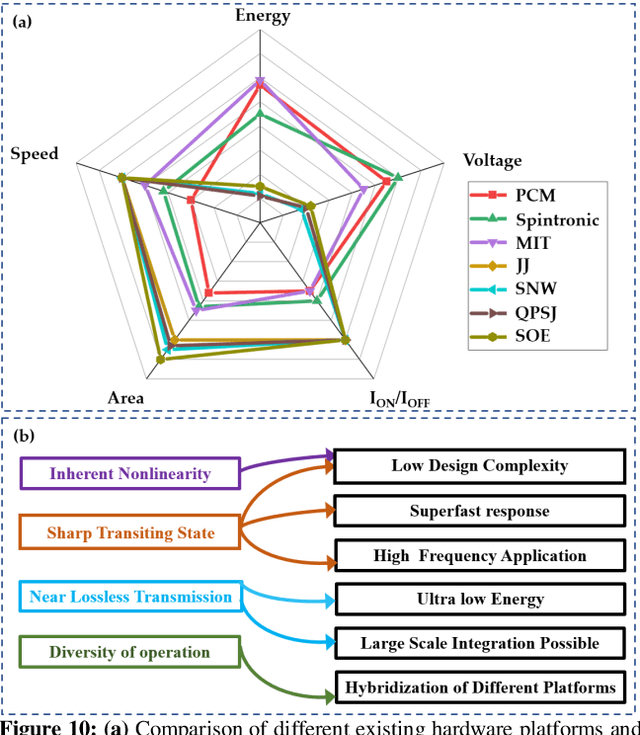
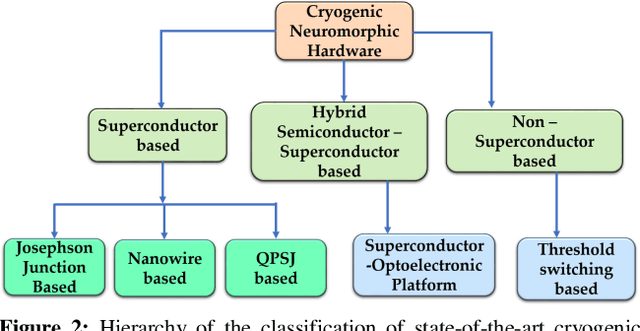
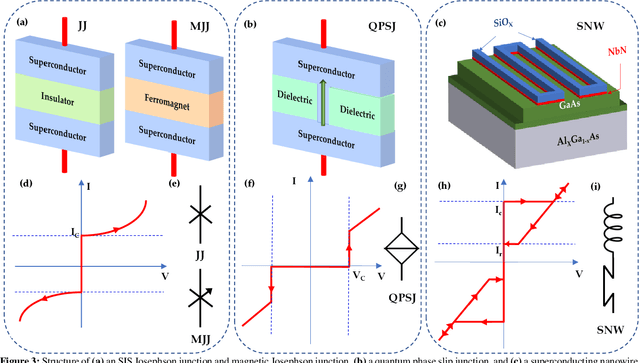
Abstract:The revolution in artificial intelligence (AI) brings up an enormous storage and data processing requirement. Large power consumption and hardware overhead have become the main challenges for building next-generation AI hardware. Therefore, it is imperative to look for a new architecture capable of circumventing these bottlenecks of conventional von Neumann architecture. Since the human brain is the most compact and energy-efficient intelligent device known, it was intuitive to attempt to build an architecture that could mimic our brain, and so the chase for neuromorphic computing began. While relentless research has been underway for years to minimize the power consumption in neuromorphic hardware, we are still a long way off from reaching the energy efficiency of the human brain. Besides, design complexity, process variation, etc. hinder the large-scale implementation of current neuromorphic platforms. Recently, the concept of implementing neuromorphic computing systems in cryogenic temperature has garnered immense attention. Several cryogenic devices can be engineered to work as neuromorphic primitives with ultra-low demand for power. Cryogenic electronics has therefore become a promising exploratory platform for an energy-efficient and bio-realistic neuromorphic system. Here we provide a comprehensive overview of the reported cryogenic neuromorphic hardware. We carefully classify the existing cryogenic neuromorphic hardware into different categories and draw a comparative analysis based on several performance metrics. Finally, we explore the future research prospects to circumvent the challenges associated with the current technologies.
The Panacea Threat Intelligence and Active Defense Platform
Apr 20, 2020

Abstract:We describe Panacea, a system that supports natural language processing (NLP) components for active defenses against social engineering attacks. We deploy a pipeline of human language technology, including Ask and Framing Detection, Named Entity Recognition, Dialogue Engineering, and Stylometry. Panacea processes modern message formats through a plug-in architecture to accommodate innovative approaches for message analysis, knowledge representation and dialogue generation. The novelty of the Panacea system is that uses NLP for cyber defense and engages the attacker using bots to elicit evidence to attribute to the attacker and to waste the attacker's time and resources.
 Add to Chrome
Add to Chrome Add to Firefox
Add to Firefox Add to Edge
Add to Edge